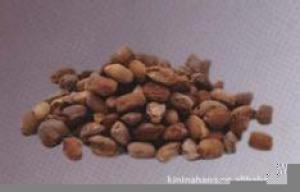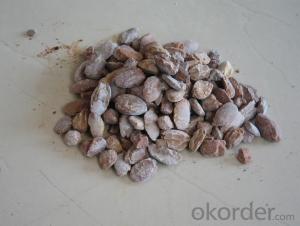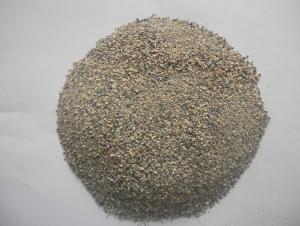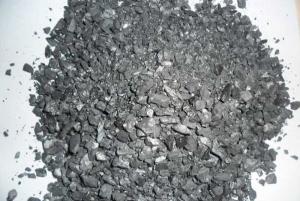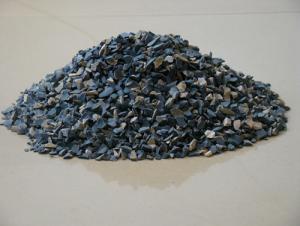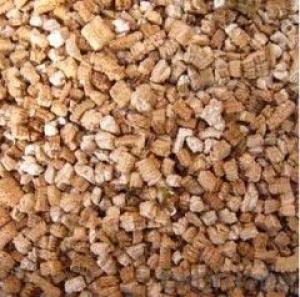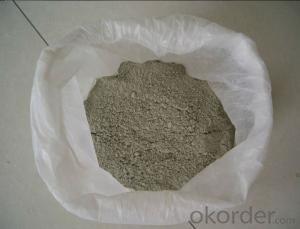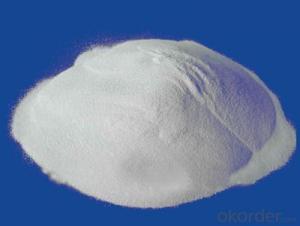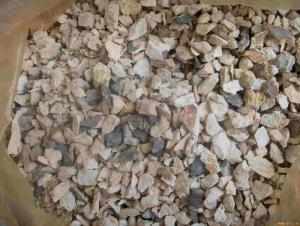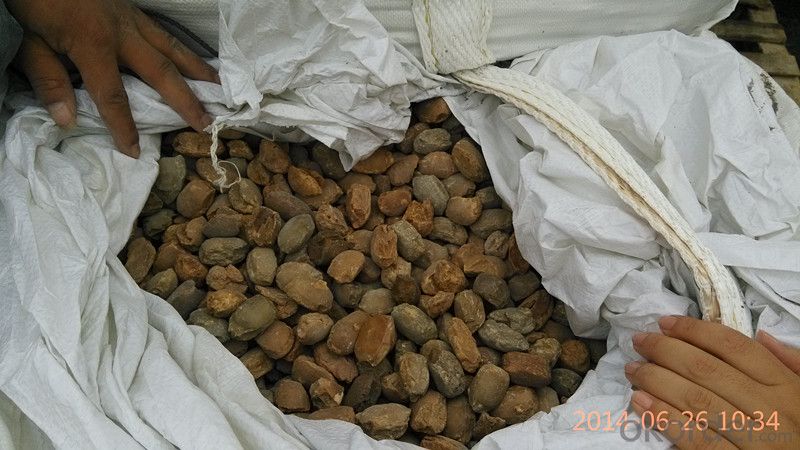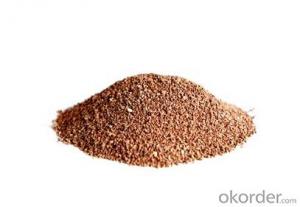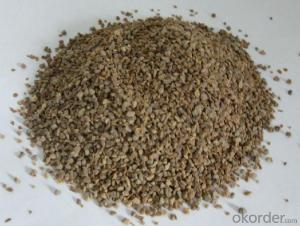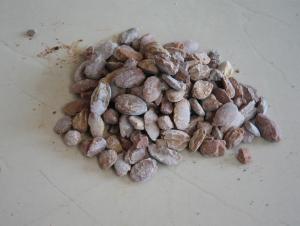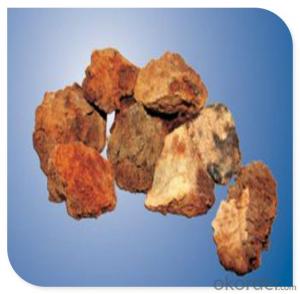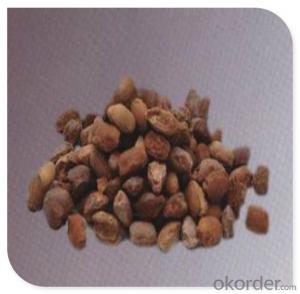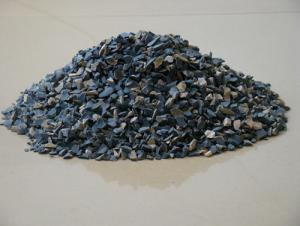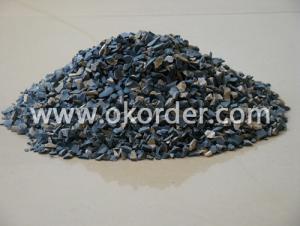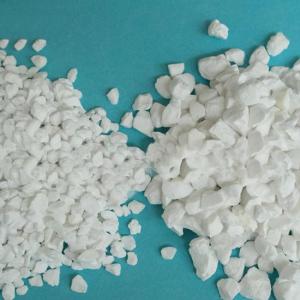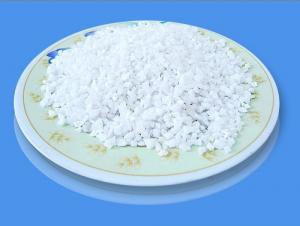High Grade Dead Burnt Magnesite - Raw Materials for Refractory
- Loading Port:
- Dalian
- Payment Terms:
- TT OR LC
- Min Order Qty:
- -
- Supply Capability:
- 2000 m.t./month
OKorder Service Pledge
OKorder Financial Service
You Might Also Like
| Item | MgO | SiO2 | CaO | LOI | B.D.(g/cm3) |
| DBM-97 | 97 | 0.7 | 1.4 | 0.2 | 3.2 |
| DBM-96 | 96 | 1.5 | 1.5 | 0.2 | 3.2 |
| DBM-95 | 95 | 2.2 | 1.6 | 0.3 | 3.2 |
| DBM-94 | 94 | 3 | 1.6 | 0.3 | 3.2 |
| DBM-93 | 93 | 3.5 | 1.6 | 0.3 | 3.2 |
| DBM-92 | 92 | 4 | 1.6 | 0.3 | 3.18 |
| DBM-92 | 92 | 4 | 1.6 | 0.3 | 3.18 |
| DBM-91 | 91 | 4.5 | 1.6 | 0.3 | 3.18 |
| DBM-90 | 90 | 4.8 | 2 | 0.3 | 3.18 |
| DBM-87 | 87 | 7 | 2.2 | 0.3 | 3.2 |
Dead burned magnesite- DBM-is produced using selected natural magnesite that is purified and is calcined in a shaft kiln.The final product is used for electric furnacefloors and furnace liner tamping.
Main products level :
0-1mm;1-3mm;3-5mm;0-10mm;0-30mm
50 to 325mesh (90% through)
Product feature:
high temperature performance and high-density, strong anti-permeability ability and easy to rapid sintering, very thin sintered layer,good thermal shock stability, strong slag-resistance, long service life and so on.
Product function:
Apply to the construction of bottom and wall of all kinds steel making electric arc furnace and ferroalloy smelting furnace for hot charging of hot metal and second hand steel
Product usage:
Mainly used in producing common magnesite brick, magnesite aluminum brick, magnesite chrome brick, gunning mix, hot patching mix for converter and EAF ect .
Product Advantage:
Our factory produce the products of the Dead-burned magnesite are selected natural magnesite, it is produced by mine-selecting, purifying, calcimine in shaft kiln. It is an ideal material for unshaped refractory material, the final products are used in open hearth furnace, electric furnace bottom and furnace's lining tamping.
- Q: Who knows what is the standard of insulation material whose fire proof is level A?
- Fire insulation materials of level A is non combustible building materials, and does not have any burning material. Level A1: single inorganic non combustible, no open flame. Level A2: A2 level: composite organic non combustible, that is, composite materials, non flammable, smoke volume should reach the standard.
- Q: How to divided the grade of external wall thermal insulation materials?
- Synthesized the three versions of GB8624 (1997,2006,2011), external wall thermal insulation fire?rating can be basically divided into: A1, A2, B1, B2, B3 and other levels. There are many technical indicators to make specific division, but I partly cannot report for a while, because it is very professional and technical. Please contact Qingdao Shanfang Instrument Co., LTD for details, they specialized in the external wall thermal insulation materials fire?rating test
- Q: What's the refractoriness and how to measure the refractoriness?
- Bottom each side length is 8 mm and upper side length is 2 mm. Under a certain temperature-rising speed, when heating, refractory's resistance to high temperature from melting is called refractoriness. The properties of cross section into an equilateral triangle and height is 30 mm. When it bends down until the vertex and chassis contact temperature is the refractoriness of sample. It bends due to the influence of its weight. Make the will-measured material into standard pyrometric cone.
- Q: What high-molecular polymers can be used as fire-resistant material binder?
- Organic silicon
- Q: How is the performance of refractory materials?
- It is a little difficult to answer. There are some requirement for refractory materials, such as fire resistance, softness, creep, thermal shock, abrasive resistance. Besides, requirements for construction performance include: Liquidity, plasticity and other linear change rate, volume density, strength (including high temperature) and all other important indicators must be tested the same conditions with the use of test conditions and test items like body density, strength, line changes in the basic project
- Q: Is the linear change on reheating the same as heating permanent linear change of refractory material?
- “+”represents expansion. the afterexpansion and aftercontraction after cooled to be at room temperature. The change may significantly damage the masonry of thermal kiln. There are regulations on the linear change on reheating of common refractory material in the national standard. Some physical chemical changes may continue. It is defined as the change from being heated to the specified temperature of refractory material sample. Heat preserving for a while till afte cooling to be at room temperature, then the residual will expand or contract in its length, heat preservation for a while, organization vitrification, the irreversible changes of its length refers to heating the firing refractory to be at high temperature, so as to make the volume of refractory materials expand or contract, due to the influence of uneven temperature or lack of time, otherwise it will cause the deformation of the refractory ball and make this indicator within standard even reach smaller value, so firing control must be strengthened in product production. But it is should not be too high. For refractory materials with same chemical composition, the linear change on reheating is produced in the heating process. Properly increasing sintering temperature and prolonging the holding time is an effective process measures, make its firing inadequate. When subjected to high temperature, it can reduce the thermal shock resistance. Minus sign "-" represents contraction. The permanent line rate refers to heating the fire refractory ball to the specified temperature. Linear change on reheating, also known as residual linear change, is an important indicator to assess the quality of refractory in the long time use. To control the permanent line rate within the standard or reach the minimum value.
- Q: Who can introduce the external wall thermal insulation materials fire rating regulations?
- External wall thermal insulation materials fire rating regulations, 1, the height of a building is greater than or equal to 100m , the combustion performance of insulation materials should be level A; 2, the height of a building is greater than or equal to 60m but less than 100m, the combustion performance of insulation materials should not be less than the level B2. When using level B2 thermal insulation material, every layer should set horizontal fire barrier zone 3,The height of building is be equal or greater than 24m but less than 60m, the combustion performance of thermal insulation material should not be less than the level B2. When using level B2 insulation material, each two-layer should set fire barrier zone ; 4, the height of building is less than 24m, the combustion performance of insulation materials should not be less than the level B2. Besides, when using level B2 thermal insulation material, each three-layer should set a horizontal fire barrier zone.
- Q: Can anyone tell me which materials are fire-proof high temperature resistant material?
- Fireproof high temperature resistant material is the synthetic material with fireproofing properties, or the material itself is high temperature resistant, heat-resistant, flame-retardant material. Fireproof materials are mainly used for construction with a variety of forms, which plays an absolute role in modern fire protection. The commonly used fireproof materials including fireproof panels, fire doors, fireproof glass, fire retardant coating and fireproof bag, etc.
- Q: What's the type of fire proofing thermal insulation materials?
- Aluminum silicate: AlSiO3 With flint clay clinker as raw material, aluminum silicate is made by resistance or electric-arc furnace fusion and then spraying processing. Aluminum silicate fiber, also known as ceramic fiber, is a new lightweight refractory material featured by light weight, high temperature resistance, good thermal stability, low heat conduction rate, small heat capacity, good mechanical vibration resistance, small thermal expansion and good thermal insulation. It can be processed into aluminum silicate fiber board, aluminium silicate fiber felt, aluminium silicate fiber rope, aluminium silicate fiber blanket, etc. Featured by high temperature resistance, low heat conductivity coefficient, light weight, long life, good tensile strength and elasticity and no toxin, this new sealing material is an alternative of asbestos and widely used for thermal insulation of thermal energy equipment in metallurgy, electric power, machinery, chemical industry, etc.
- Q: how to classify the fireproofing material levels A1 A2 B1?
- their classification is shown specifically in Fireproof? Specification of Building Interior Decoration?Design GB 50222-95 appendix A, flammability,inflammability materials, flame retardency, noninflammability: combustion performance of A, B3, B2, B1 materials are divided into
Send your message to us
High Grade Dead Burnt Magnesite - Raw Materials for Refractory
- Loading Port:
- Dalian
- Payment Terms:
- TT OR LC
- Min Order Qty:
- -
- Supply Capability:
- 2000 m.t./month
OKorder Service Pledge
OKorder Financial Service
Similar products
Hot products
Hot Searches
Related keywords
